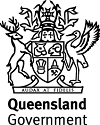Published Tuesday, 06 February, 2018 at 03:35 PM

Minister for Innovation and Tourism Industry Development and Minister for the Commonwealth Games
The Honourable Kate Jones
Brisbane preserves Southern Hemisphere’s first power cable
Lengths of Brisbane’s 134-year-old Edison Tubes – the Southern hemisphere’s first ever power cable – are being shipped to leading museums across the world.
Innovation and Tourism Industry Development Minister Kate Jones was on hand today to witness the careful removal and package of the cable that connected power from the old Government Printery on William Street, to nearby Parliament House on Alice Street.
“They are an important piece of Queensland’s history carefully being unearthed from beneath the $3 billion Queen’s Wharf Brisbane development,” she said.
Archaeologists supervised the extraction and preservation (fish oil) of the aged electrical cabling.
“In 1884 Brisbane was the first city in the Southern Hemisphere to have Edison Tubes. This was behind only New York and London,” Ms Jones said.
“Queensland – as a world-leader in innovation was not just the Smart State creation of the last decade – it was well and truly alive 134 years ago.
“The roll-out of Edison Tubes hooked buildings up with simple power stations.
“Now we’re preserving these historic tubes and sending some of them to great museums around the world.”
Lengths are being carefully packed and sent to; Science Centre London, Edison Historic Park and IEEE History Museums in New Jersey USA, MAAS Sydney (Powerhouse Museum), Commissariat Store Museum Brisbane and Highfields Energy Centre Toowoomba as well as Parliament House and Energex.
Ms Jones joined Destination Brisbane Consortium Project Director Simon Crooks, the Royal Historical Society of Queensland’s Dean Prangley and Historical Engineers Australia expert Brian Becconsall at the Queen’s Wharf Brisbane site to witness the cables being retrieved.
Mr Crooks said today marked a Queensland milestone and something the Consortium, as the QWB developer, wanted to ensure was captured and preserved along with the heritage of the site.
“The Edison Tubes are important as they provide a glimpse into Queensland’s past when electricity was introduced and revolutionising the lifestyles of Queenslanders,” he said.
Once electrical lighting had been demonstrated in 1883 at the Government Printery at 84 William Street, the government commissioned the Edison Company in the United States to permanently connect the Printery and Parliament House to a steam driven electrical generator located at the rear of the Printery.
“In 1884, Edison Tubes were then run under William Street to Parliament House to connect it to the steam generator, enabling electricity to replace some 200 hot gas lamps within Parliament House.
“Heritage is an important part of our future development and the beautiful heritage buildings within our development precinct will become a huge attraction for local and international visitors.”
Dean Prangley of the Royal Historical Society of Queensland said Queen’s Wharf Brisbane was the largest conservation project in Australia with its nine heritage buildings and two heritage-listed parks.
“The heritage buildings are an important part of the Queen’s Wharf Brisbane development, and we are working with Destination Brisbane Consortium to ensure they are sensitively revitalised and will shine a new spotlight on Brisbane’s history,” Mr Prangley said.
“We support the consortium’s work with Energex, the Queensland Government and other local historians to ensure Queensland and some of the world’s museums each get a piece of this rare and interesting look into our past and the progress into life with electricity.”
To learn more about Queen’s Wharf Brisbane, visit www.queenslandwharfbrisbane.com.au.
Meanwhile, the Executive Building – once dominant on Brisbane’s skyline and the epicentre of the State’s political power is gone.
The memories of its nine premiers and their hundreds of Cabinet meetings over its 45-year life are now just that - memories.
Over the past 12 months the once proud 16-storey building that stood at 100 George Street has been gradually eaten down. It has been demolished to make way for the $3 billion Queen’s Wharf Brisbane integrated resort development.
“It’s sad in a way to see the Exec, the Annexe and 80B and 80A come down,” said Innovation and Tourism Industry Development Minister Kate Jones.
“But we know it’s the best thing for Queensland – this demolition has made way for the Queen’s Wharf which is estimated to bring 1.4 million annual visitors in years to come.
“In place of the old Exec Building will be a massive transformational project that will reconnect the city to the river and create 2000 construction and 8000 operational jobs.
“Our estimates show that over the next 15 years, a quarter of jobs in the Brisbane CBD will be at QWB.
“I’m also happy to report that Destination Brisbane Consortium advises it’s achieving its 90 per cent recycling target from the site’s demolition – taking scrap to reuse elsewhere in southeast Queensland.”
The former Executive Building was first proposed by the Queensland Government in the 1960s.
It was officially opened on April 27, 1971 by then Premier Joh Bjelke-Petersen and was subject to a number of controversies;
- It came under attack in 1975 when a letter-bomb addressed to Mr Bjelke-Petersen exploded on the 14th floor, injuring two mailroom officers
- It was referred to as "Sir Joh's citadel" in the Sydney Morning Herald in 1985 after lights in the former Premier's Office stayed on despite widespread power outages
- The Executive Building also housed the Fitzgerald Inquiry into alleged police misconduct
It officially closed in mid-December 2016.
Queen’s Wharf Brisbane features will include:
- 50 new restaurants and bars
- More than 1000 premium additional hotel rooms
- 2000 residential apartments
- Reactivation of some of the city’s most significant heritage buildings
- More than 2000 jobs during peak construction and 8000 operational jobs
- The 100 metre Sky Deck
- 12 football fields of public space
- A new pedestrian bridge from the CBD to South Bank
Media contact: Jack Harbour 0419 620 447

